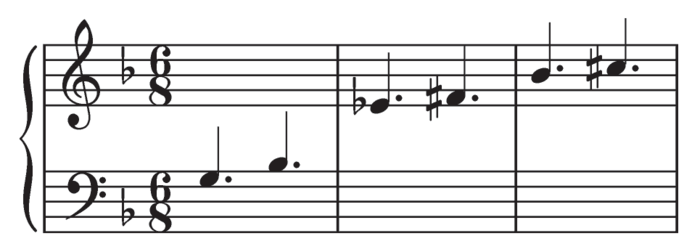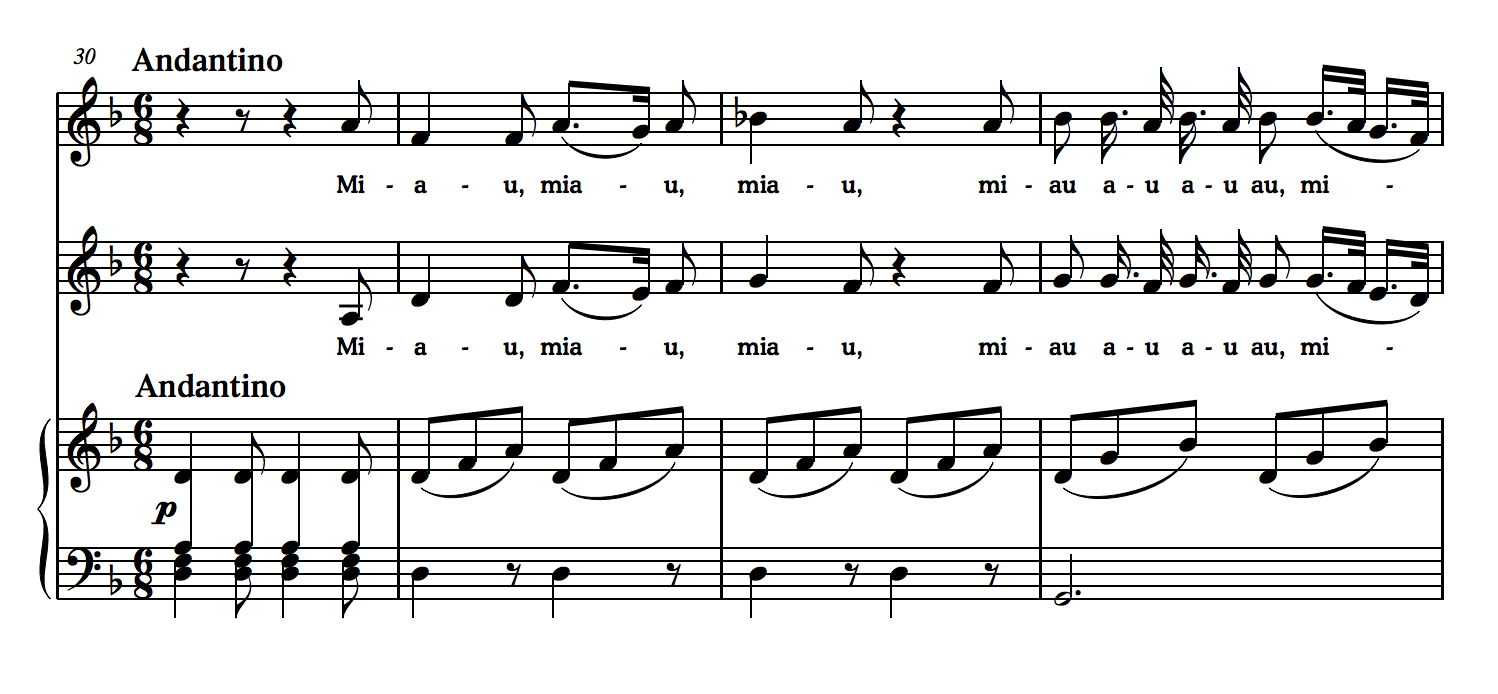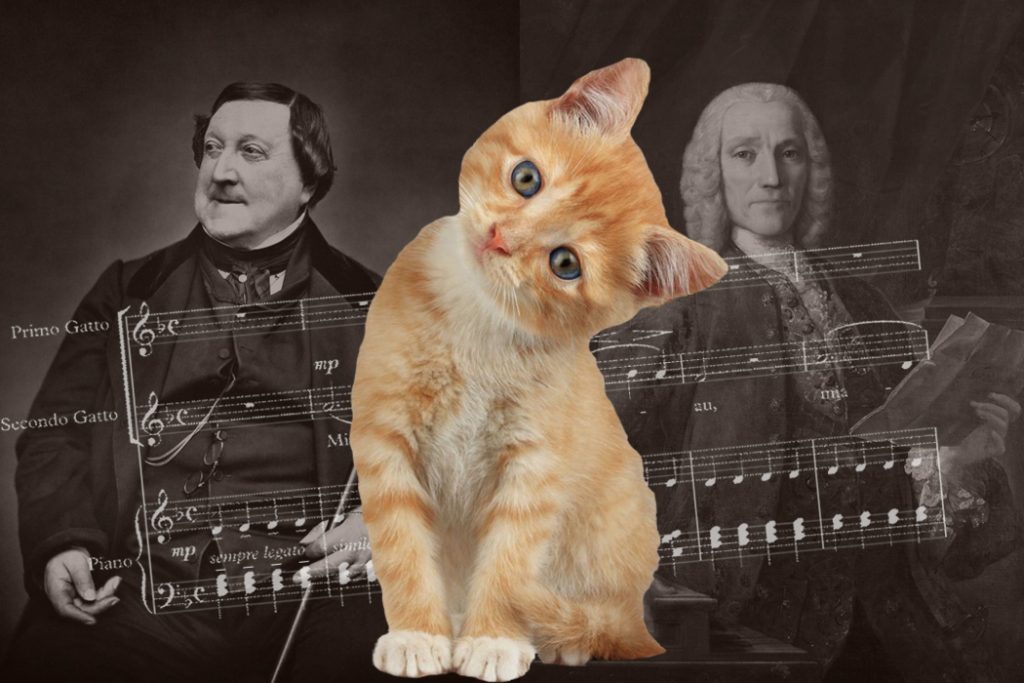+ Take your modern jazz piano and hip-hop beat making to new heights with Soundfly’s new course, Elijah Fox: Impressionist Piano & Production!
We’ve written on cats in classical music before, so this should come as no surprise to the casual Flypaper reader, but, yes, we are that excited. “Cat mania” has certainly reached new heights in the Internet Age, with “Grumpy Cat” earning over twenty million views on YouTube and searches for “cat merchandise” yielding over ten thousand results on Amazon. It doesn’t seem like modern culture could possibly be much more obsessed with our furry friends.
As it turns out however, this feline fervor, this passion of the paws, is not unique to 21st century American culture. Though you may already know how obsessed the ancient Egyptian pharaohs were with cats, countless other cultures throughout history have also paid homage to our furry friends in works of art. We’re going to take these two cat-inspired compositions by 18th and 19th century Italians as evidence.
“Fugue in G Minor” by Domenico Scarlatti (“The Cat’s Fugue”)
Domenico Scarlatti was born in 1685 in Naples to Alessandro Scarlatti, a prominent Italian composer known as the founder of the so-called Neapolitan School of opera, which formed the foundation upon which modern opera could be built. The younger Scarlatti followed in his father’s footsteps and became a composer.
He lived at the end of what is known as the Baroque Era (think: Bach, fugues, harpsichords) and the beginning of the Classical Period (think: Mozart, elegance, string quartets). As a result, Scarlatti’s music has been known to form an important bridge between the two stylistic periods. This is especially evident in his most popular collection of works, his 555 keyboard sonatas.
But Scarlatti also achieved additional, anecdotal fame for his “Cat’s Fugue” in G Minor.
This particular fugue is based on a rather peculiar, unexpected theme, a series of ascending notes that seem to defy diatonic harmony. As the story goes, the theme was not written by the logical, harmonically-minded Scarlatti, but by his cat. Scarlatti’s cat, named Pulcinella after a popular character in the Naples puppetry scene, was said to have been walking on his owner’s piano, and stepped on this series of random notes. Scarlatti quickly wrote down the motif that the cat produced and used it as the foundational material for his “Fugue in G Minor.”

Scarlatti never himself referred to the piece as “The Cat’s Fugue” — the name was appended to the piece later by publishers hoping to capitalize on its unique origin story. English composer George Frideric Handel (of Messiah fame) is known to have used a derivation of the theme in one of his pieces, and superstar pianist and composer Franz Liszt regularly played the piece in his concerts.
“Duetto Buffo di Due Gatti” by Gioachino Rossini (sort of)
The “Duetto Buffo di Due Gatti” (in English: “Humorous Duet of Two Cats”) is unique among pretty much all Western music, classical and otherwise, for the bizarre style in which it is notated to be sung. There are no real lyrics, instead each vocal utterance in the piece is sung as a “meow,” to imitate the sounds of a cat. Though normally attributed to composer Gioachino Rossini, the actual authorship of the piece is slightly more complicated.

The duet is actually a mash-up of three different pieces, compiled by a minor English composer named Robert Lucas Pearsall who, for this piece, adopted the pseudonym G. Berthold. Rossini is often attributed with writing the duet because two of the pieces in it are derived from Rossini’s opera Otello.
Not to be confused with Giuseppe Verdi’s opera of the same name, Rossini’s Otello was premiered in 1816 in Naples. Known as one of the great Italian opera composers of all time, Rossini is perhaps best known for The Barber of Seville and William Tell. Otello is also a very popular Rossini opera, and, with some significant differences, follows the same story of Shakespeare’s famous drama Othello. Two songs from Otello are used in the “Duetto” and the third song is by C. E. F. Weyse, a little-remembered Danish composer, primarily of lieder and other vocal songs.
Peak cat collaboration?
And so it seems that cat obsession is not unique to the Internet era but may well rather be an ever-present phenomena, fluffily permeating even the stuffiest, most rigid aspects of our culture. Egyptian pharaohs and Italian composers could not escape the claws of cat obsession, and, it seems, neither can we.
But have we reached peak cat collaboration yet? We doubt it. Lithuanian composer, Mindaugas Piečaitis, and his collaboration with the web sensation Nora, the Piano Cat, conveniently titled “CATcerto,” have taken the cat-inspired compositional challenge to the next level.
Piečaitis used YouTube videos of Nora playing her improvised and emotive modernist motifs on her piano at home to compose music for a full chamber orchestra with Nora listed as a “soloist.” (At 3:01, the orchestra also “meows” as if engaged in conversation with the cat herself.)
Hope you’ve enjoyed these a-meow-zing composers.
Play Your Heart Out!
Continue your learning adventure on Soundfly with modern, creative courses on songwriting, mixing, production, composing, synths, beats, and more by artists like Kiefer, Kimbra, Com Truise, Jlin, Ryan Lott, RJD2, and our newly launched Elijah Fox: Impressionist Piano & Production.




